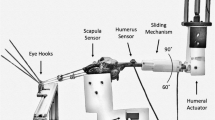Abstract
The glenohumeral joint, because of its relatively poor osseous and capsuloligamentous stability, depends upon the proprioceptive and stabilizing capabilities of musculotendinous structures more than any other joint in the human body. The purpose of this review is to compare the morphology, histology, and sensorimotor functional relationships of the human glenohumeral joint with the more abundant animal research data. From a synthesis of this information, a proprioceptive and stability alliance is proposed for the human glenohumeral joint which is initiated by mechanoreceptor activation from capsuloligamentous and musculotendinous structures, resulting in reflex-mediated protective muscular responses that are ultimately under the bias and sensitivity control of upper levels of the central nervous system hierarchy. The clinical impact of these findings as they relate to rehabilitation and conditioning strategies, surgical intervention, aging, and injury are discussed in addition to future research directions.
Similar content being viewed by others
Author information
Authors and Affiliations
Additional information
Received: 13 June 1997 Accepted: 25 July 1997
Rights and permissions
About this article
Cite this article
Nyland, J., Caborn, D. & Johnson, D. The human glenohumeral joint A proprioceptive and stability alliance. Knee Surgery 6, 50–61 (1998). https://doi.org/10.1007/s001670050072
Issue Date:
DOI: https://doi.org/10.1007/s001670050072




